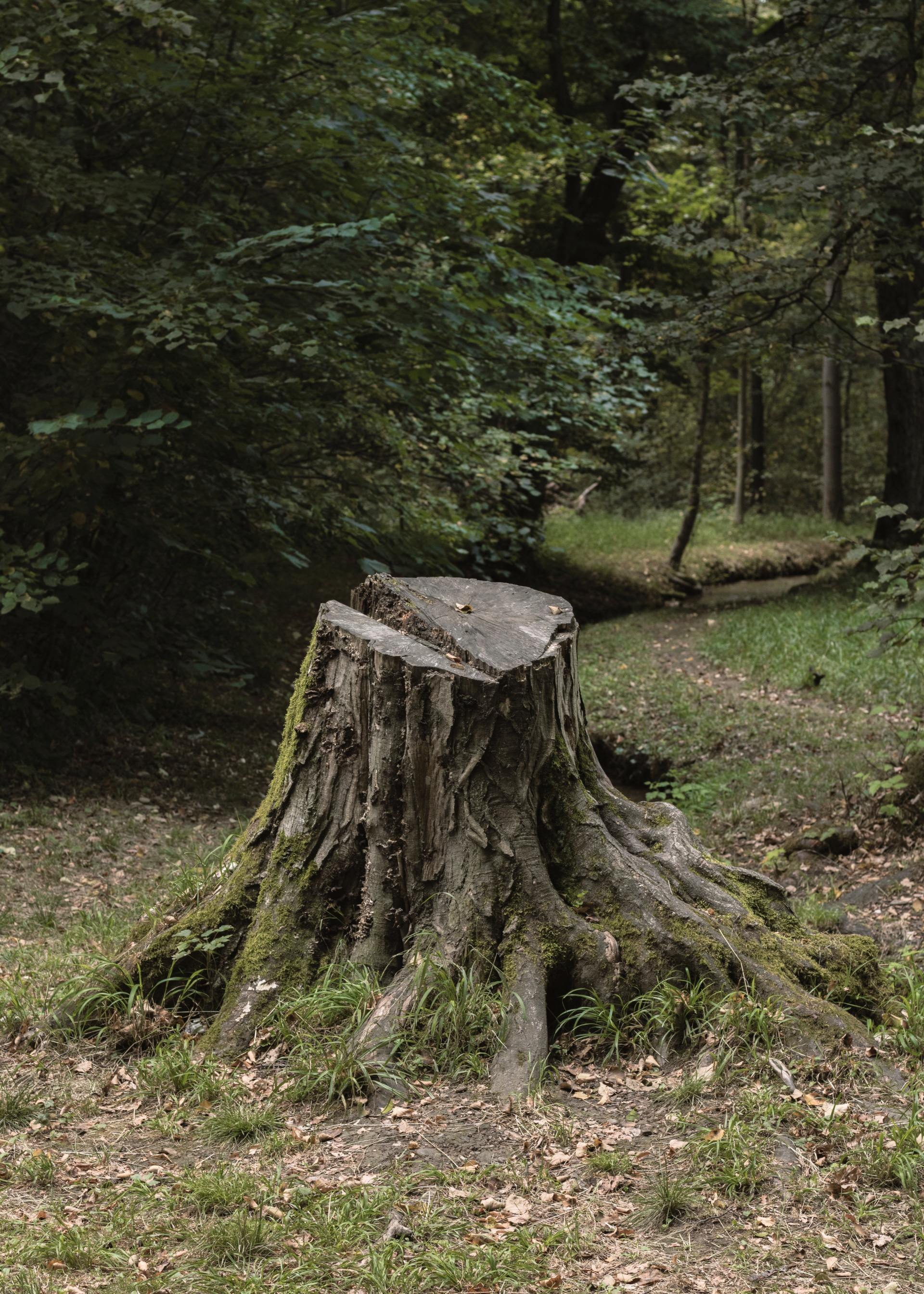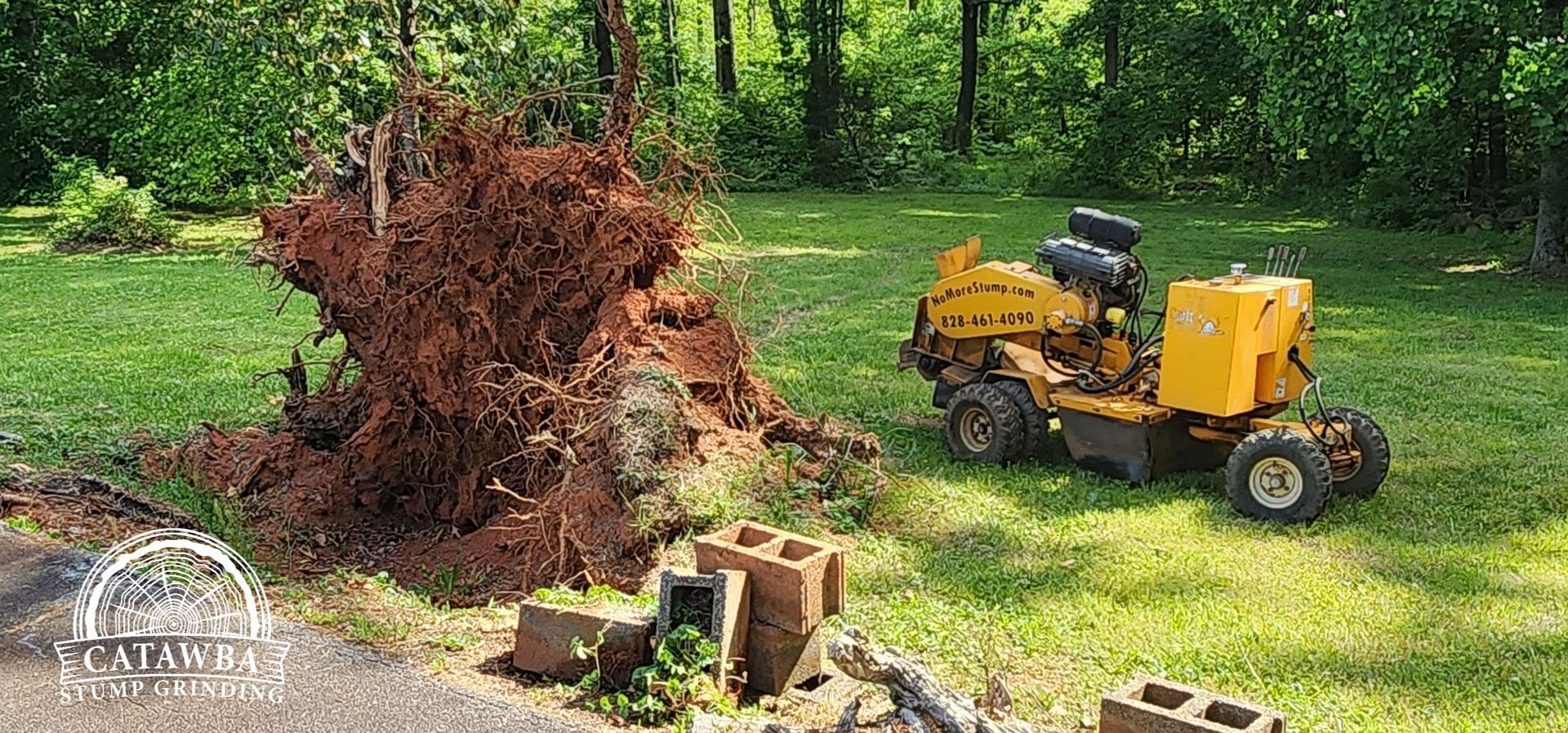The Do's and Don'ts of Stump Grinding
Ever think about removing a tree or stump yourself?

Everyone desires an attractive yard, but occasionally you may end up with a stump in it. Whether it's a stump you inherited with your home purchase, a recently cut tree, or roots that are causing problems in your yard. Perhaps you wish to expand your flower garden and need to remove a tree to create space. While it might seem feasible to tackle this yourself, often, this task is better left to professionals.
Felling a tree and stump removal will actually require:
- A qualified tree service professional to determine when and how this should be done
- Qualified tree surgeons to remove the tree limb by limb in small sections to prevent damage the surrounding structures and minimize the impact area around the tree.
- All the right equipment maintained to the correct standards.
- Years of experience and knowledge to ensure no one gets injured.
- The proper stump grinder and one that will have minimal impact on your landscaping.
Things not to do after cutting a tree
Don't leave a stump after removing the tree. It's generally advisable to remove a tree stump when you cut down the tree. Stumps can pose a tripping hazard, and individuals unaware of their presence could suffer injuries. Moreover, a stump left to decay can attract insects and fungi, potentially spreading to other healthy trees. Additionally, there's a risk of termites from the decaying stump moving to your home, leading to expensive damage.
-Don't apply stump killer in spring or early summer when the sap is rising. Stump killer is effective; it delivers on its promise to halt new growth and accelerate the decomposition process. However, it requires patience as it works gradually. Opting for this long-term solution means preparing for insects, and it may take several years for the stump to completely decompose.
Ways to remove a tree stump
Tree stump removal is typically achieved through one of three methods: applying stump killer chemicals, extracting it by digging and using a winch, or employing a stump grinder.
-Stump Killer. As suggested, the chemical should be applied to stumps during autumn and winter. It is crucial to adhere strictly to the manufacturer's instructions due to the hazardous nature of the chemicals. The application should be directly on the stump, and only on living (recently cut) stumps, as it is ineffective on dead ones. To prevent chemical leaching into other garden areas and to protect birds, animals, and children from contamination, the stump must be covered after application.
-Digging it out. This method is only suitable for smaller stumps. Ensure there's no risk of damaging surrounding trees or property. Ample space is required to attach a winch if you're using one. If you opt for this method, familiarize yourself with the equipment to prevent injury to yourself or others. Additionally, sever any large roots before winching to minimize strain on the equipment and to prevent excessive disruption of the ground.
-Stump grinding. Our preferred method of stump removal is effective for both recently cut trees and stumps that have been present for years. It's a swift process, allowing you to proceed with your yard improvements or other projects. However, safety should be a priority. Maneuvering heavy grinding equipment into position can be challenging, whether it's down the side of a property or through your neighbor's garden when there's no alternative access. When operating the grinder, it's crucial to wear appropriate safety gear, including gloves, eye and hearing protection, sturdy boots, and durable long pants at a minimum.
Tree stump removal DANGER
- When using a stump grinder always steer clear of the blades and the cutting side of the grinder when the machine is running (those things are designed to cut through tree stumps, so imagine what they’d do to your legs). Remove all stones and rocks from around the grinding area as they are likely to be thrown up at great speeds and could cause damage or injury.
- Stump killer is essentially poison so if you’re considering using this at all you must consider children and wildlife and securely cover the stump after applying the chemical.
- Fungus: the gift that just keeps on giving! A left stump will usually attract fungus. As a stump dies and rots it creates the perfect breeding ground for the stuff and once it takes hold it could well spread to other trees, compromising their health.
When you need a tree or stump removed, it's important to understand the process, its necessity, and the duration of the task. A qualified team of arborists or tree surgeons can guide you through the steps, allowing you to inform your family and neighbors, and arrange sufficient parking space for the vehicles that will remove the debris generated by the work.
Should you decide that DIY stump removal isn't for you, or if you've attempted the aforementioned methods without success, don't hesitate to reach out to us for a complimentary, no-obligation quote on stump grinding.





